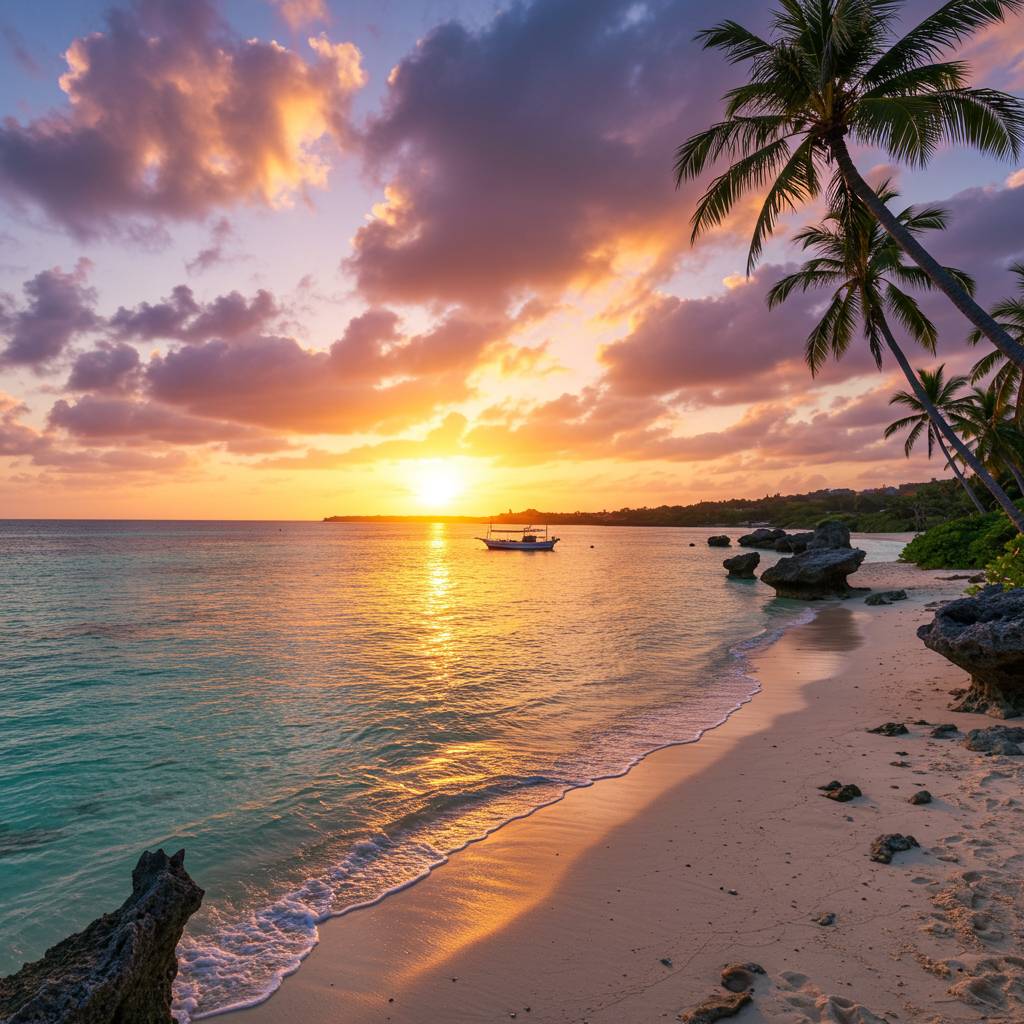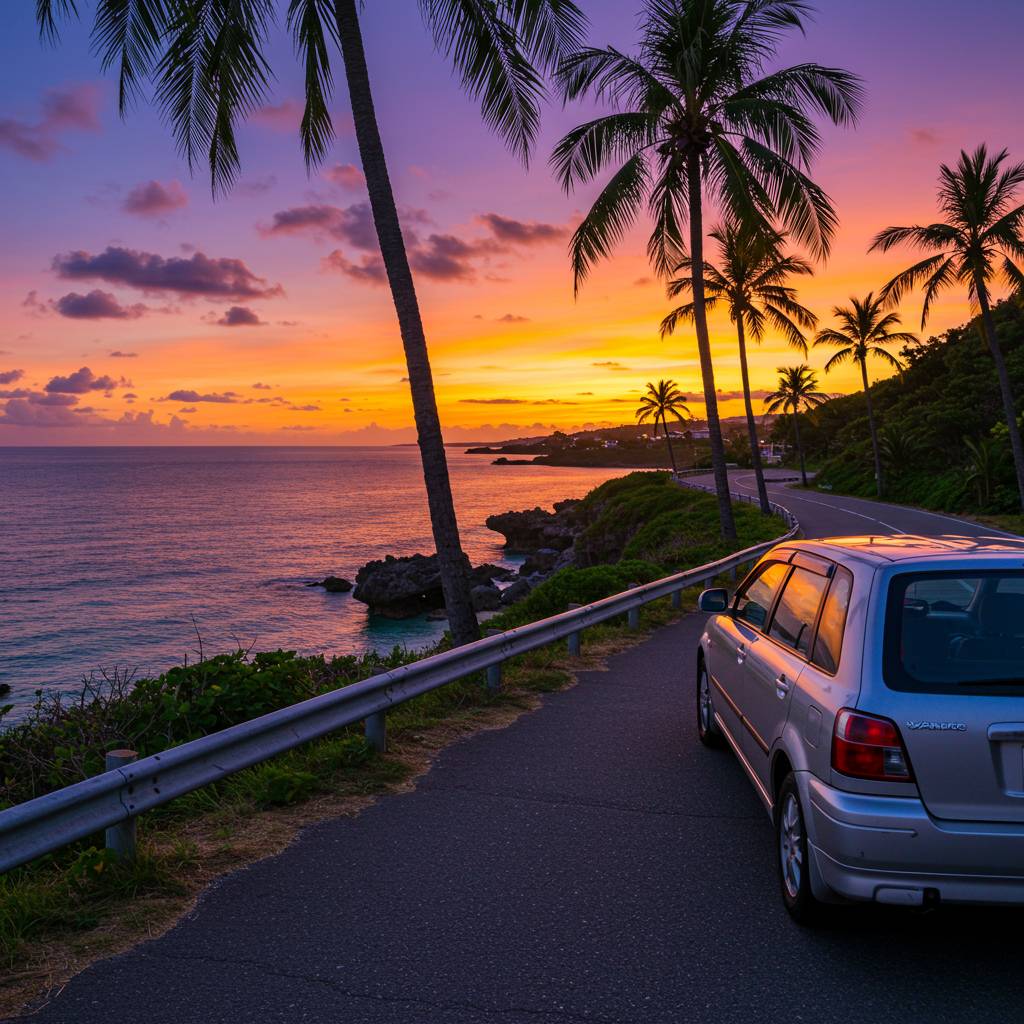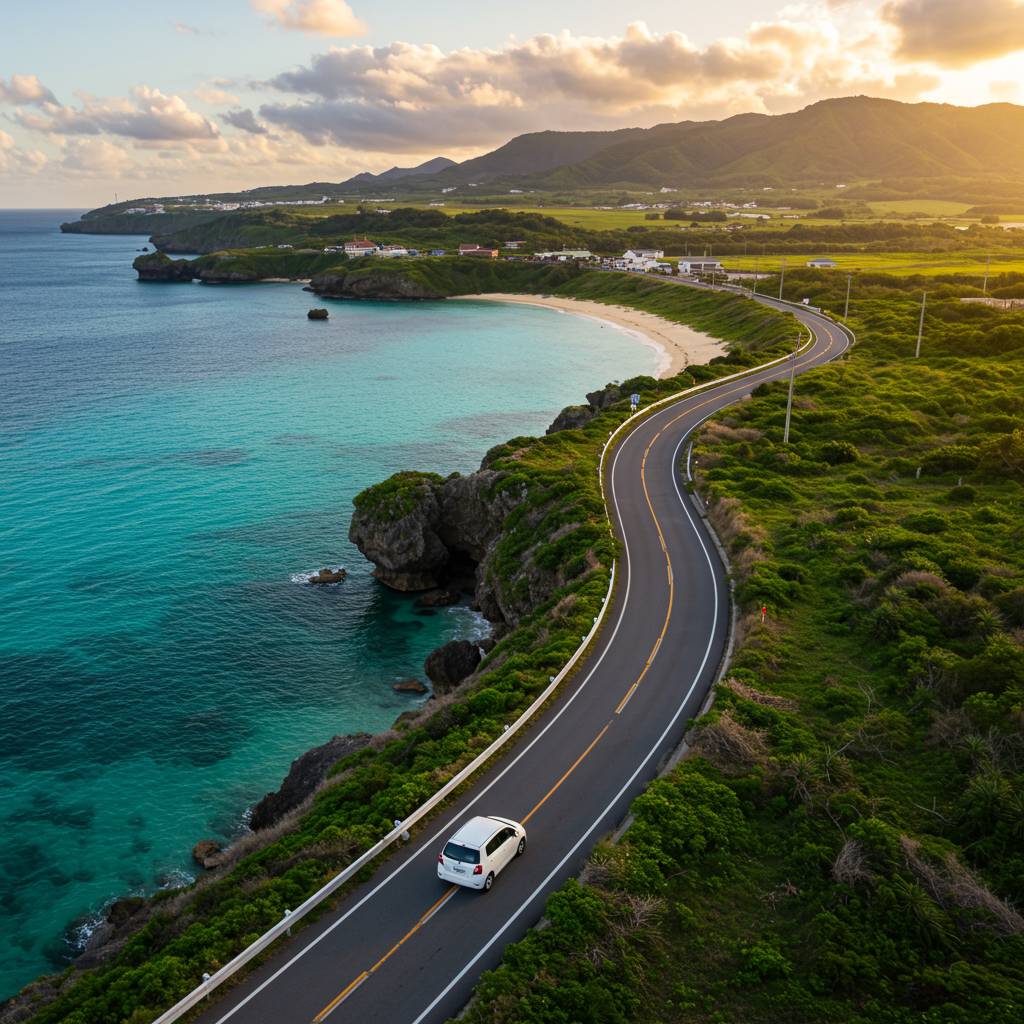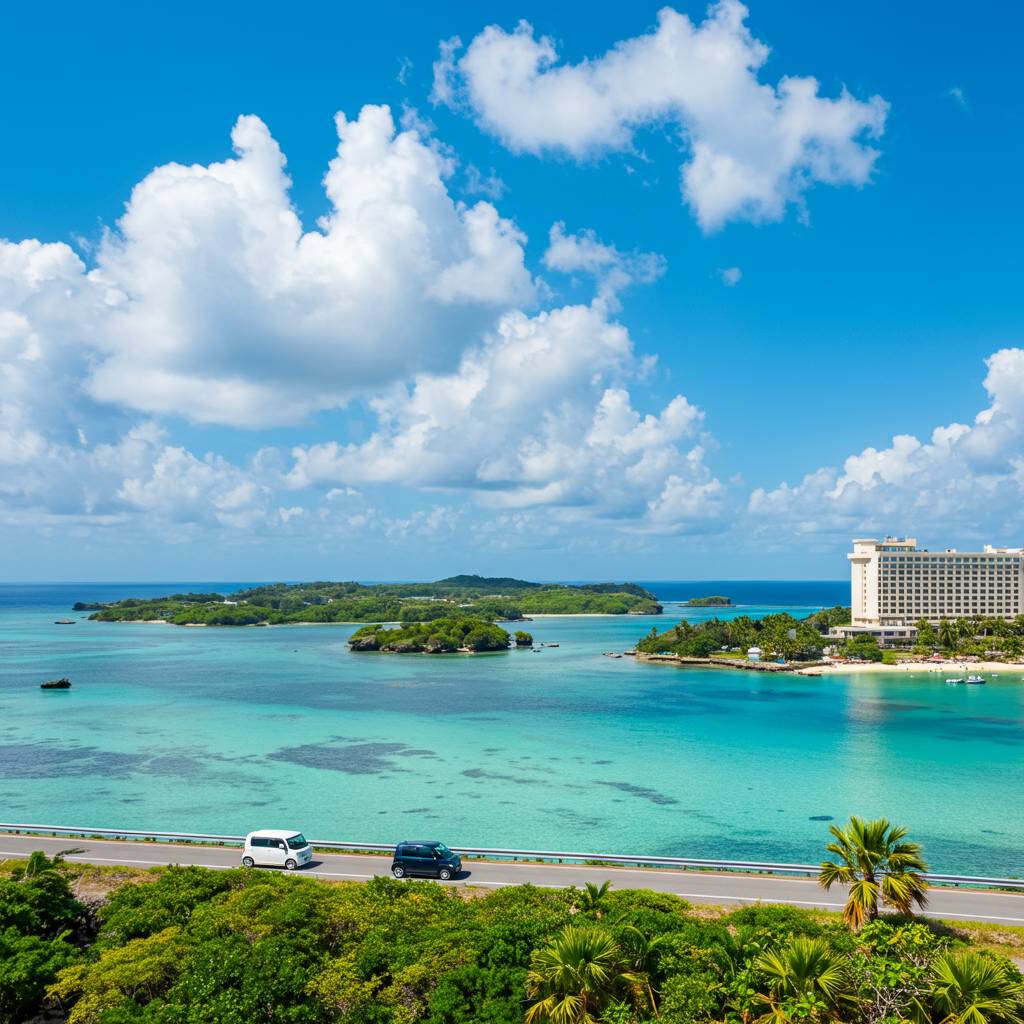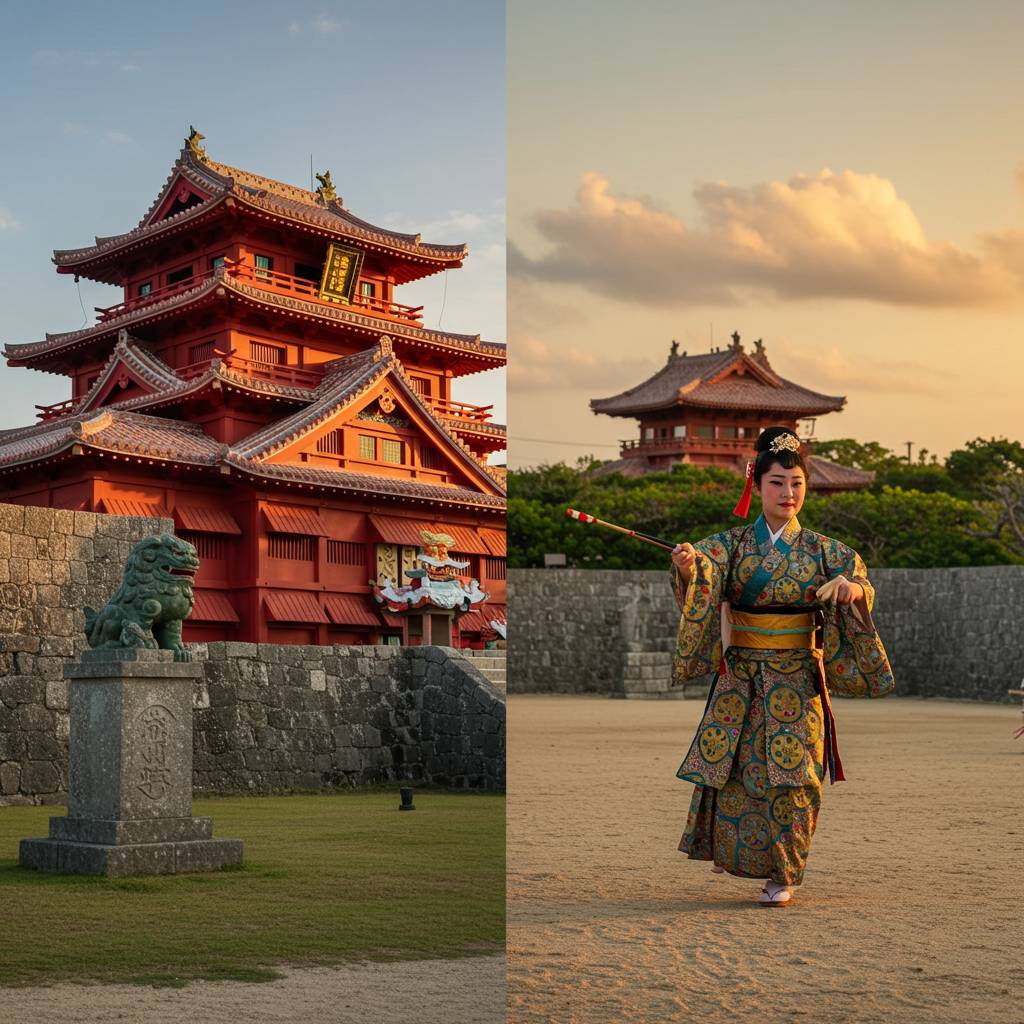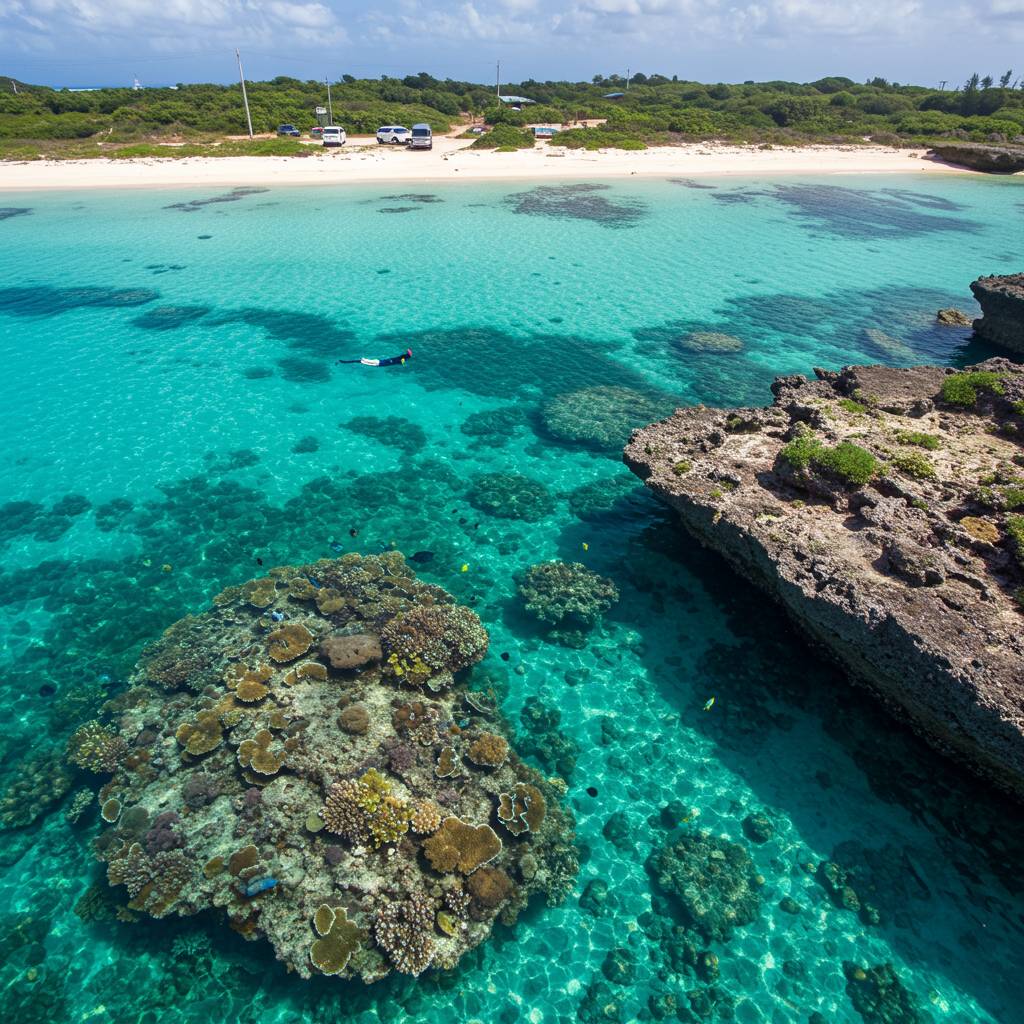Have you ever witnessed the sky transform into a masterpiece of crimson, gold, and violet hues as the sun kisses the horizon? While many travel enthusiasts debate the world’s most spectacular sunset destinations, Okinawa’s coastal canvas remains Japan’s best-kept secret. Unlike the commercialized sunset spots that flood social media feeds, Okinawa offers pristine beaches where time seems to pause as day transitions to night.
In this comprehensive guide, I’ll share exclusive insights from years of exploring Okinawa’s 160+ islands, revealing photography locations that rival Santorini and Bali but without the crowds. Discover why professional photographers consistently rank Okinawa’s sunsets above Hawaii’s famous twilight scenes, and follow my meticulously crafted itinerary that synchronizes with optimal weather patterns and tidal conditions.
Whether you’re planning your first Japanese island adventure or seeking to capture that perfect golden hour photograph, this expedition through Okinawa’s sunset landscape promises to transform how you experience nature’s daily farewell performance.
1. Top 5 Secret Spots for Breathtaking Okinawa Sunset Photography
Okinawa’s pristine beaches offer some of the most spectacular sunset views in the world, yet many visitors miss out on the island’s hidden gems for sunset photography. Beyond the well-trodden tourist spots lie secluded beaches where the interplay of golden light, azure waters, and dramatic skies creates perfect photographic opportunities. After exploring countless coastal stretches across the island, I’ve discovered five lesser-known locations that promise unforgettable sunset experiences.
Kouri Bridge Viewpoint stands as my top recommendation—situated away from the bridge’s main observation deck, a small path leads to a rocky outcrop where photographers can capture both the elegant curve of the bridge and the sun descending behind it. The combination of architectural elements with natural beauty creates compositional magic rarely found elsewhere.
Zanpa Cape offers dramatic cliff views with its lighthouse serving as an ideal foreground element. While tourists typically gather at the main lookout, walking about 200 meters north reveals a less crowded perch where waves crash against rocks below, adding dynamic energy to sunset photographs.
For those seeking isolation, Miyagi Island’s western shore provides numerous small coves accessible only by narrow trails. The third cove from the main parking area features unique rock formations that create natural frames for the setting sun, with tide pools reflecting the colorful sky for doubled impact.
Hateruma Island, Japan’s southernmost inhabited island, delivers perhaps the most rewarding sunset experience. The remote Nishihama Beach allows photographers to capture uninterrupted horizon views where the sun appears magnified as it touches the ocean’s edge—bring a telephoto lens to maximize this effect.
Finally, Yonaha Maehama Beach on Miyako Island offers the perfect combination of accessibility and beauty. While its main stretch attracts crowds, the northern section remains relatively quiet. The shallow, crystal-clear waters create mirror-like reflections of sunset colors, essentially doubling the canvas for photographers.
Each location offers unique lighting conditions depending on the season, so I recommend checking sunset times and planning accordingly. For the most dramatic skies, visit during the transitional months between seasons when atmospheric conditions create more textured cloud formations. Professional photographers often arrive at least an hour before sunset to scout compositions and secure prime positions before the golden light peaks.
2. Why Okinawa’s Sunsets Outshine Hawaii: A Local’s Guide to Timing and Locations
While Hawaii may claim fame for its sunset views, Okinawa’s celestial displays offer something truly magical that many travelers find superior. The key difference lies in Okinawa’s unique geographical positioning and atmospheric conditions. Unlike Hawaii’s consistent year-round sunset times, Okinawa experiences more dramatic seasonal variations, creating diverse lighting conditions that photographers dream about.
The East China Sea provides a distinctive backdrop, with its waters reflecting light differently than the Pacific Ocean surrounding Hawaii. During summer months, Okinawa sunsets peak between 7:15-7:45 PM, offering extended golden hour photography opportunities. Winter brings earlier but more intensely colored displays around 5:30-6:00 PM, with deep oranges and purples rarely seen in tropical Hawaii.
Cape Manzamo stands as the premier sunset location, where the iconic elephant-trunk shaped rock formation creates silhouettes against the blazing sky. For a less crowded experience, Senaga Island connected to the mainland by a thin causeway provides panoramic views without the tourist masses found at Hawaiian hotspots like Waikiki.
What truly sets Okinawan sunsets apart is how they interact with the archipelago’s varying landscapes. The northern beaches near Onna Village offer mountain backdrops, while southern spots like Miibaru Beach provide uninterrupted horizon views. Local photographers recommend arriving 45 minutes before official sunset times to secure prime viewing positions and witness the full transformation of colors.
Unlike Hawaii’s often quick transition from day to night, Okinawa’s sunsets tend to linger, with afterglow effects sometimes lasting 30+ minutes post-sunset. This extended display gives visitors more time to appreciate the changing palette across the sky. The Busena Marine Park observation deck offers elevated viewing that Hawaiian beaches rarely match, allowing viewers to track the sun’s descent from various angles.
When timing your visit, consider Okinawa’s rainy season (May-June) which, counterintuitively, produces some of the most spectacular sunsets as storm clouds create dramatic light filtering effects. The subtropical climate ensures comfortable evening temperatures year-round, unlike Hawaii’s occasional evening chill during winter months.
3. The Ultimate Okinawa Beach Sunset Itinerary: Weather Patterns, Tides, and Hidden Gems
Planning the perfect sunset viewing in Okinawa requires understanding the island’s unique weather patterns, tide schedules, and knowing which hidden spots offer the most spectacular views. This comprehensive itinerary will help you capture those magical moments when the sky transforms into a canvas of orange, pink, and purple hues over Okinawa’s pristine waters.
Okinawa’s weather follows predictable patterns that savvy sunset chasers can leverage. The clearest skies typically occur after a light rain shower, when atmospheric particles are washed away. During summer months, aim for sunset viewings between 7:00-7:30 PM, while winter months offer earlier displays around 5:30-6:00 PM. The shoulder seasons of late spring and early autumn often provide the most dramatic color contrasts due to seasonal atmospheric conditions.
Tide patterns significantly impact your sunset experience. Low tide exposes fascinating rock formations and tidal pools that reflect the colorful sky, creating mirror-like effects perfect for photography. High tide brings the ocean closer, intensifying the sound of waves and creating a more immersive experience. Check local tide charts online or through the Okinawa Marine Information Center for precise daily forecasts.
For an unforgettable sunset itinerary, start at Cape Manzamo around 5:00 PM (adjust seasonally) to secure a prime viewing spot near its famous elephant-trunk-shaped rock formation. The elevated perspective here provides sweeping ocean views as the sun begins its descent. Next, if time permits before sunset, drive 15 minutes to Onna Village’s Manza Beach, where the Ryukyu limestone formations create dramatic silhouettes against the changing sky.
Among Okinawa’s hidden gems for sunset viewing is Sunabe Seawall in Chatan. Unlike more touristy locations, this local favorite offers unobstructed horizon views without the crowds. The connected walkway allows you to stroll while watching the sun’s progression. Nearby cafés like Seaside Café Hanon offer perfect post-sunset refreshments with continuing ocean views.
For those willing to venture further, Hateruma Island holds the distinction of being Japan’s southernmost inhabited island and offers what locals call “the edge of Japan sunset.” The western coast’s Nishihama Beach provides an uninterrupted view where the sun appears to melt into the Philippine Sea. While requiring additional travel planning, this remote location rewards visitors with pristine viewing conditions and minimal light pollution.
Equipment preparation is crucial for maximizing your sunset experience. Beyond cameras, pack a light jacket as coastal breezes intensify during sunset. A small flashlight helps navigate dimming paths after sunset, while a portable seat or blanket ensures comfort during the waiting period. Water-resistant footwear allows exploration of tidal areas without concern.
The post-sunset period, known as “magic hour,” often delivers equally stunning visuals as the sky transitions through deeper blue tones. Plan to remain at your viewing location for approximately 30 minutes after the sun disappears below the horizon to experience this extended color show and the emergence of early stars over the East China Sea.
For rental car reservations in Okinawa, visit “RENT A CAR HIROBA”
Make the best memories of your trip at the rental car plaza!
Click here to reserve a rental car ↓
・Cheap rental cars in Okinawa are at the lowest price starting from 1,500 yen. Rent-a-car Hiroba is recommended for reservations and comparisons.
https://rentacar-hiroba.com/

